That path? The butterfly leads and biologists follow. The resulting habitat restoration is finely tuned over time. Appalachian Trail Conservancy (ATC) staff and partners have pulled invasive barberry and bittersweet, planted nectar wildflowers, and felled single trees to create sunny glades within the hardwood forest canopy. Each tweak to remove a threat or enhance metalmark habitat results from what the butterflies teach the scientists.
At first glance, a northern metalmark appears the opposite of a monarch reigning over wildflowers in a royal cloak of orange wings etched in black. Where the monarch is a long-distance migratory champion, the demure metalmark is a stay-at-home specialist few people will ever see. Monarchs face dangers from Canada to Mexico; a whole colony of metalmarks can be eliminated in one fell blow (as happened in Connecticut at a rock quarry). However, the two butterflies share striking qualities as pollinators reliant on one kind of caterpillar host plant. For the monarch, it’s milkweed. For the northern metalmark, the host is roundleaf ragwort. Both butterflies are at high risk of vanishing forever unless people care enough to take meaningful actions based on science — not just once, but over the long run.
While the northern metalmark’s future is far from secure, ATC seasonal biologists Fern Crossway and Leo Wahl recorded an uptick in numbers in a population along the A.T. last summer. So elusive are the butterflies that the biologists equipped with elongated nets had to pay keen attention among forest glens and meadows. “It’s like finding a gemstone,” says Crossway. “They are hidden in tiny pockets.”

After Orlousky rounded up partners and funding for a six-week-long monitoring season, Crossway and Wahl began tracking and gathering new information for the northernmost population found near the A.T. They recorded specific locations with GPS, determined two favorite wildflowers for nectar (black-eyed Susan and butterfly milkweed), and noted clustering behaviors within an area of ten square meters, the size of a typical bedroom. From mid-June to mid-July, they tracked and marked 155 adults — up from 117 in 2019 and 89 in 2018.
Central to the project is University of Connecticut’s Dr. David Wagner, professor of ecology and evolutionary biology and author of a 2021 report titled “Insect Decline in the Anthropocene: Death by a Thousand Cuts.” The report highlights the colliding forces causing the insect apocalypse, from global warming and related extreme weather to deforestation, industrial agriculture, insecticides, urbanization, and introduced species. Wagner initiated monitoring at this site in 2007. Crossway and Wahl conducted summer research under Wagner in 2022 and recently received their undergraduate degrees from the State University of New York College of Environmental Science and Forestry.
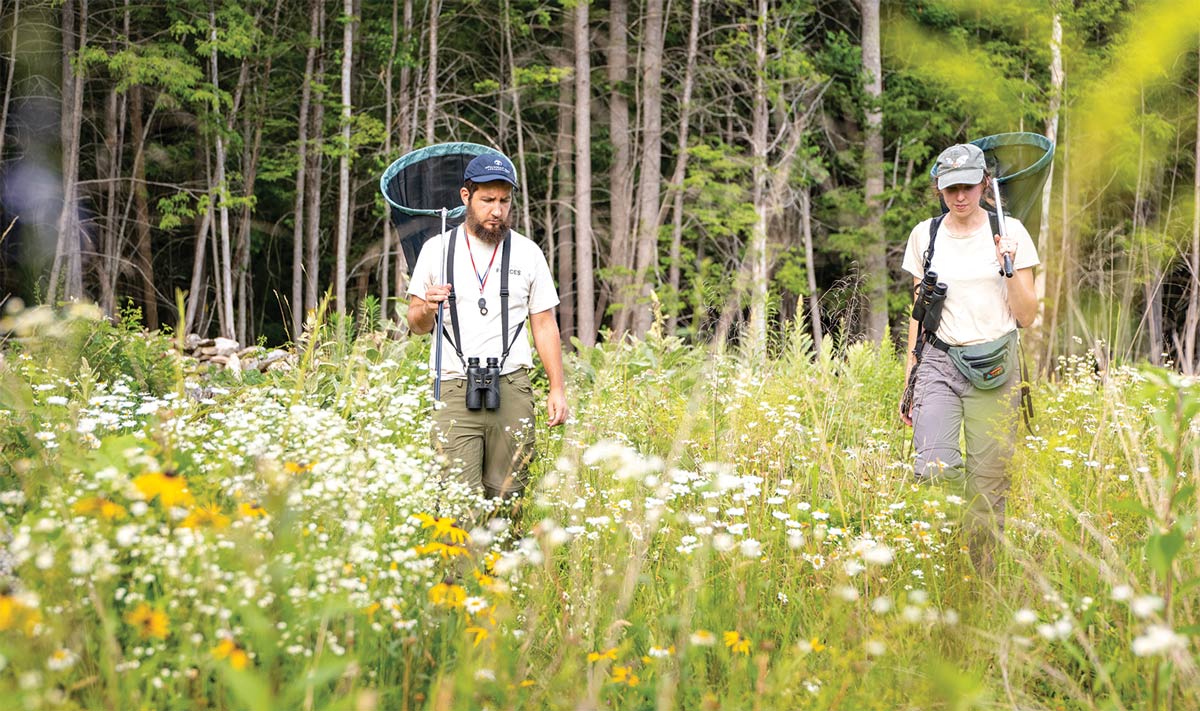
Every species plays a critical role in the stability and productivity of our ecosystems that are essential for all life, Tallamy explained. Both endangered and common insects are showing alarming declines in populations. We must act swiftly. That sometimes means stepping in to help nature contend with our human-caused meddling, like introduced plants overwhelming and even eliminating the native wildflowers butterflies rely on. Tallamy calls the protected A.T. “a lifeline and connection to the natural world from Georgia to Maine.”
Within the 2,194-mile-long corridor, the ATC’s science and stewardship team is vigilant in identifying threats, monitoring declining species, and taking action to keep the “Wild East” corridor strong and functioning for all plants and animals, including more than 1,800 vulnerable species. The work done to protect the imperiled metalmark butterfly will further benefit a wide suite of other native species that rely on the same high-quality habitat.
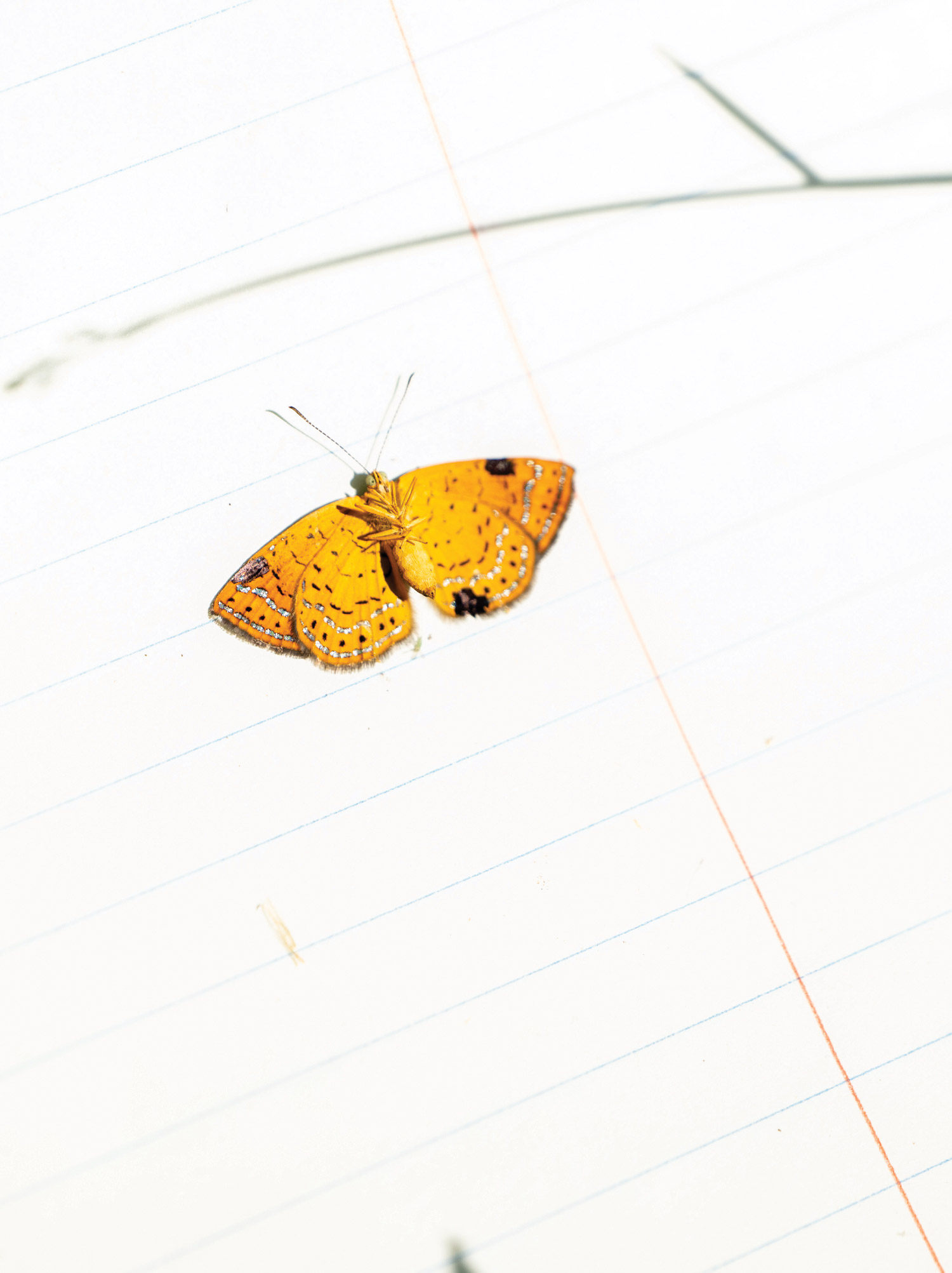
Photo by Chris Gallaway/Horizonline Pictures
To be a northern metalmark is to live on the edge — literally. Where two habitats meet, they sip nectar from radiant flowers within sun-dappled glades on forest slopes, and only where red cedar grows in calcareous soils formed by limestone. These sunny openings are often no bigger than a double door and are typically near rivers with limestone outcroppings. Generations of northern metalmark must find all their habitat needs at every point in their life cycle within a small range often an acre or less in size.
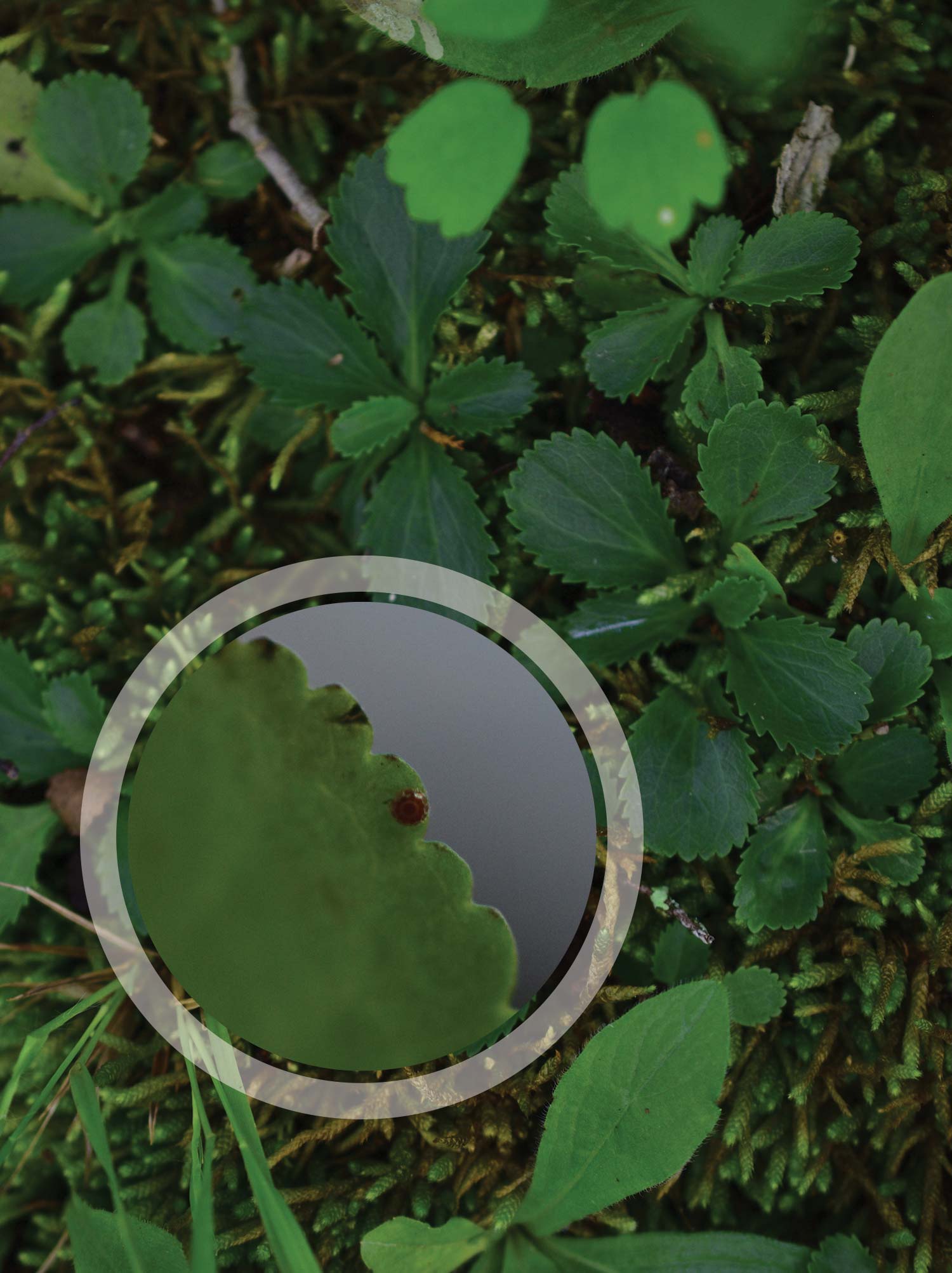
Photo by Fern Crossway
In August, the hairy little caterpillars hatch to feed on ragwort leaves. Their meals are so tiny it’s difficult to notice the munching. By fall, they burrow into the soil and sleep until spring. Then, the half-grown caterpillars eat and grow until mid-June, when they form their chrysalises on the soil around ragworts. By month’s end, the crowning moment of metamorphosis arrives — voila! The winged adults emerge to fly and find their special nectar plants. Assuring the right wildflowers are blooming at the right time in the right places is one of the restoration challenges. While it’s tempting to call northern metalmarks finicky, their behaviors reflect an exquisite evolution. Consider this: The oldest butterfly fossils date to 200 million years ago and over time diversified into the kaleidoscopic array of some 17,500 species in the world with 750 in the U.S. — each with a remarkable life history.
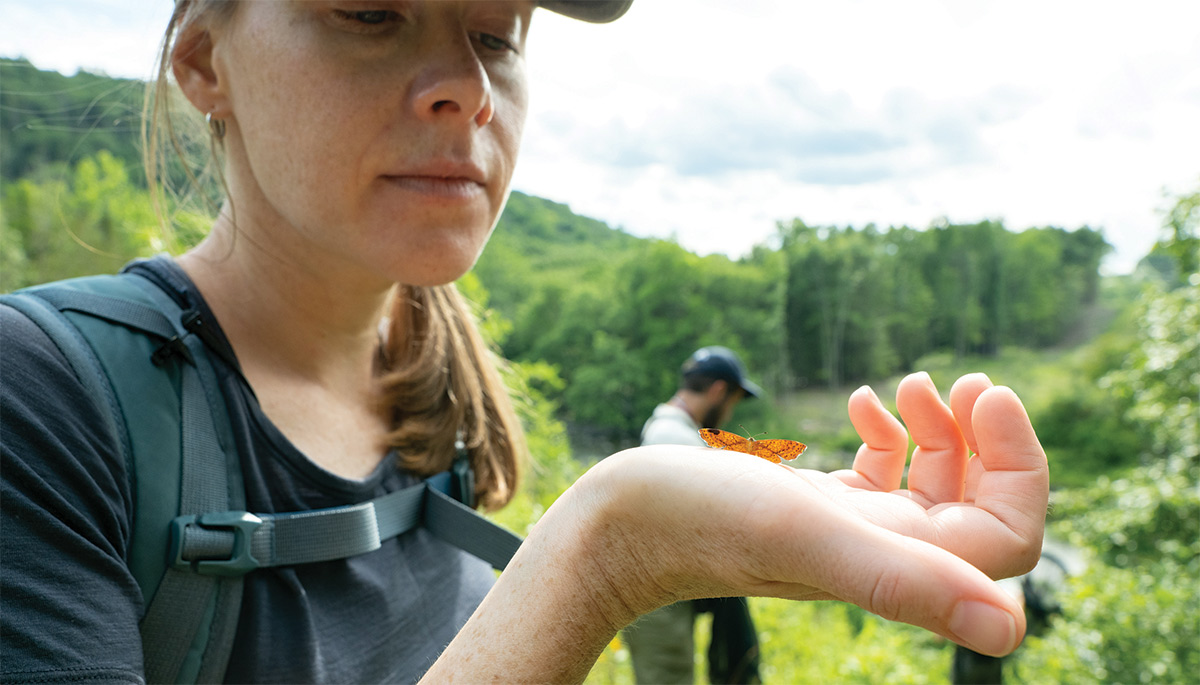
Photo by Chris Gallaway/Horizonline Pictures
Next came the act of coaxing a butterfly into a jar to be put into a brief sleep for recording details, including noting the sex. A female differs from a male with a slight curvature of her wing and a larger abdomen. To mark an individual took applying dots in a recognizable pattern on wing undersides. Then, the awakening metalmark would grasp Crossway or Wahl’s fingertip to be conveyed to a leaf and watched over until fully recovered. Often they’d recatch butterflies the following day, and over the season marked an estimated eighty percent of the population.
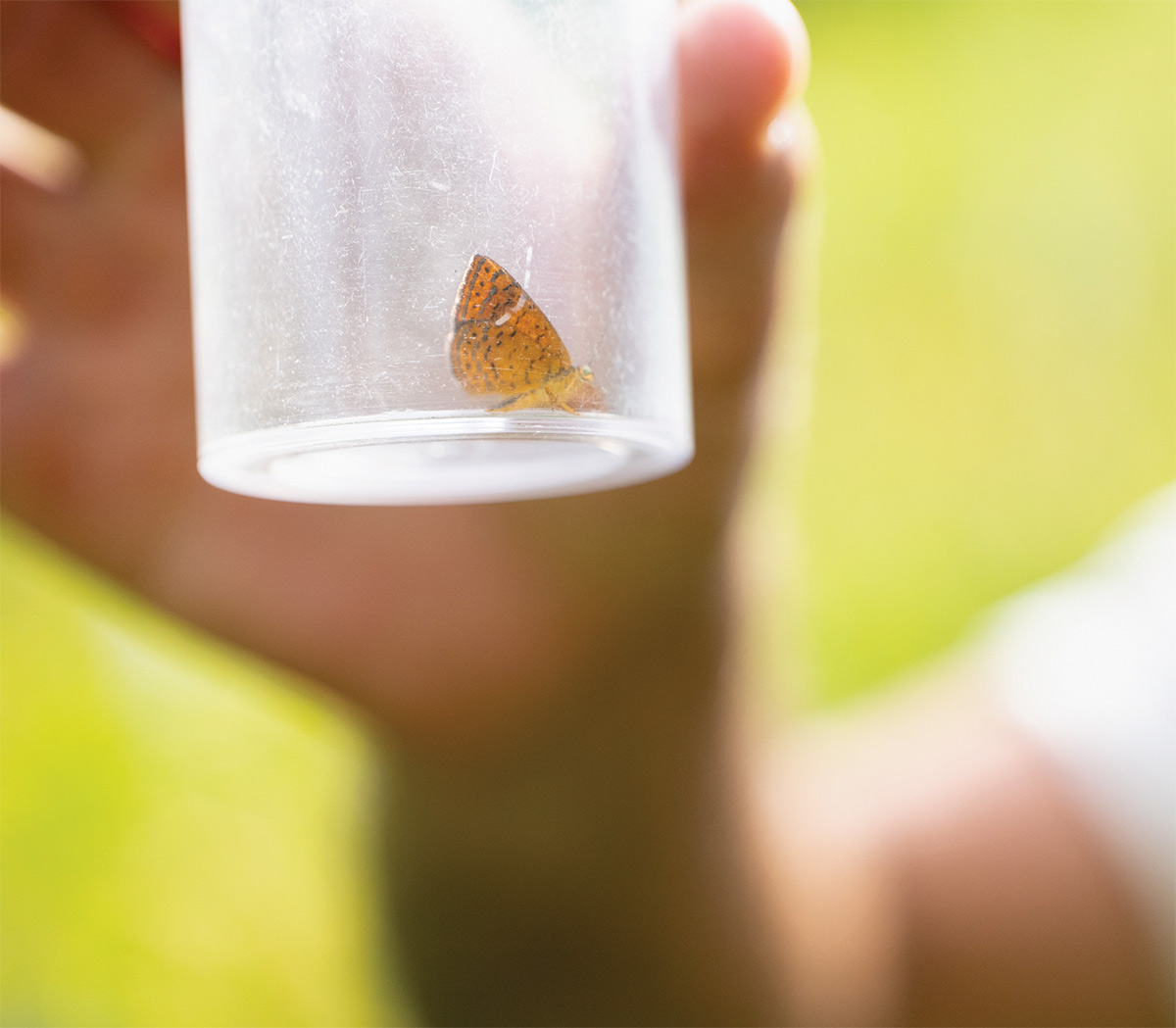
Photo by Chris Gallaway/Horizonline Pictures
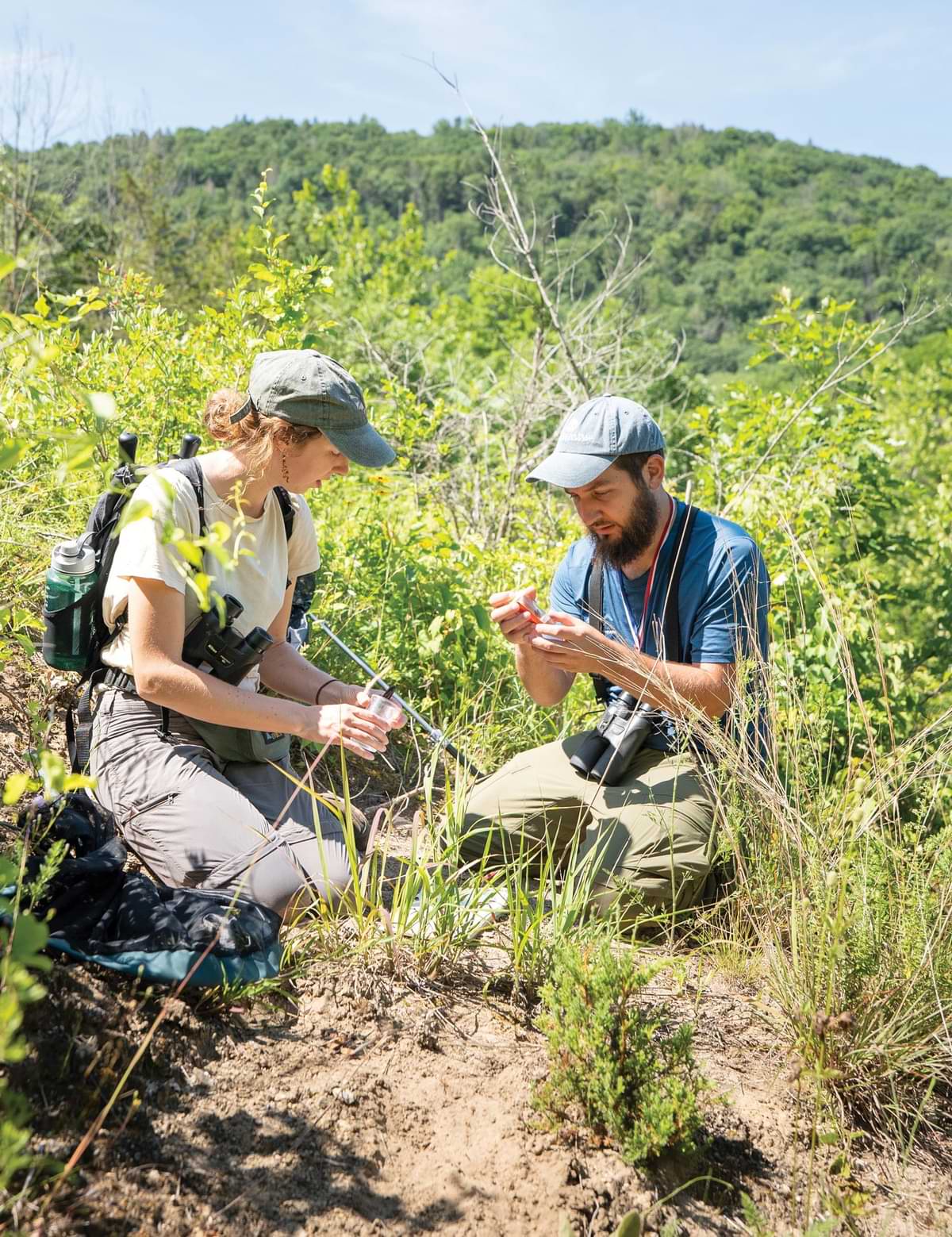
Photo by Chris Gallaway/Horizonline Pictures
A powerline cut composes one of the habitats for a certain flock (called a flutter) of the metalmarks Crossway and Wahl followed. However, the butterflies led them to only one edge near the river as a favored locale for preferred wildflowers, shrubs, and nearby host plants. Regular communication with the utility company is critical to avoid inadvertent damage from clearing trees and brush to keep the strip open below the electrical lines. “Minor shifts in policies can make a big difference,” the ATC’s Orlousky says. “When you commit to the long vision, there can be positive change.”
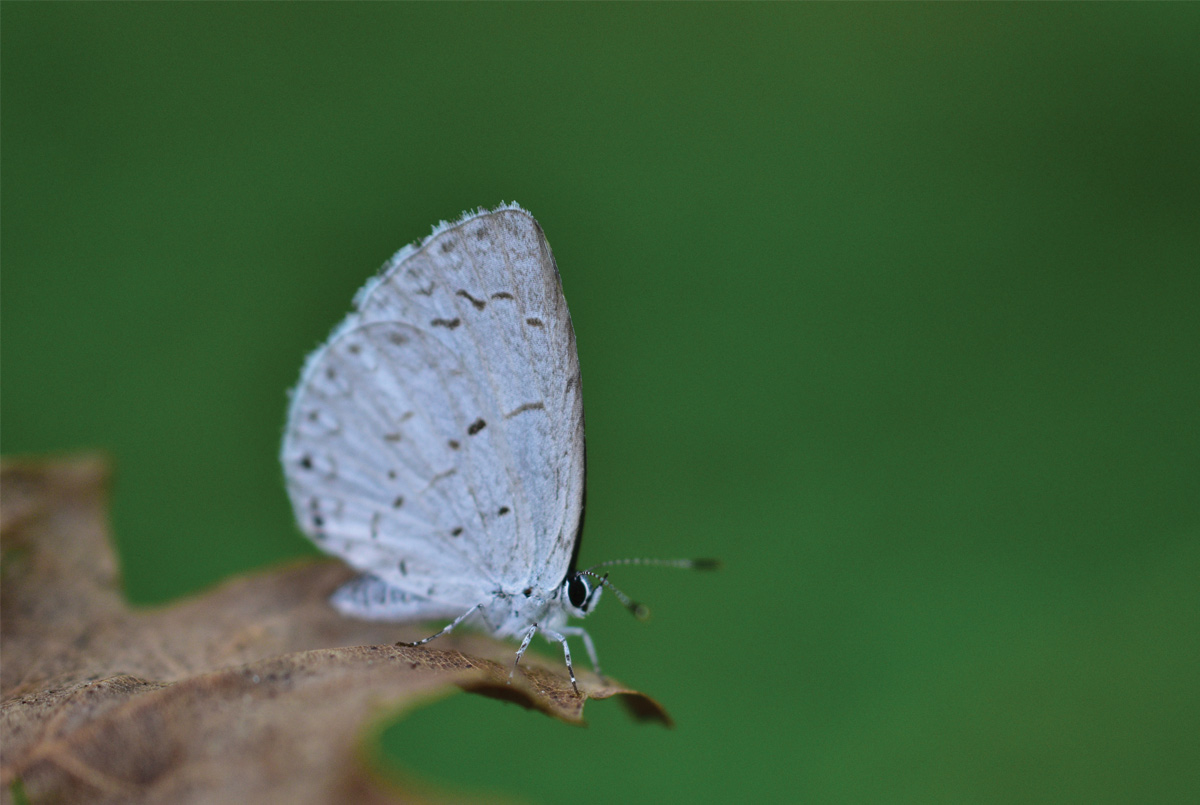
Photo by Fern Crossway
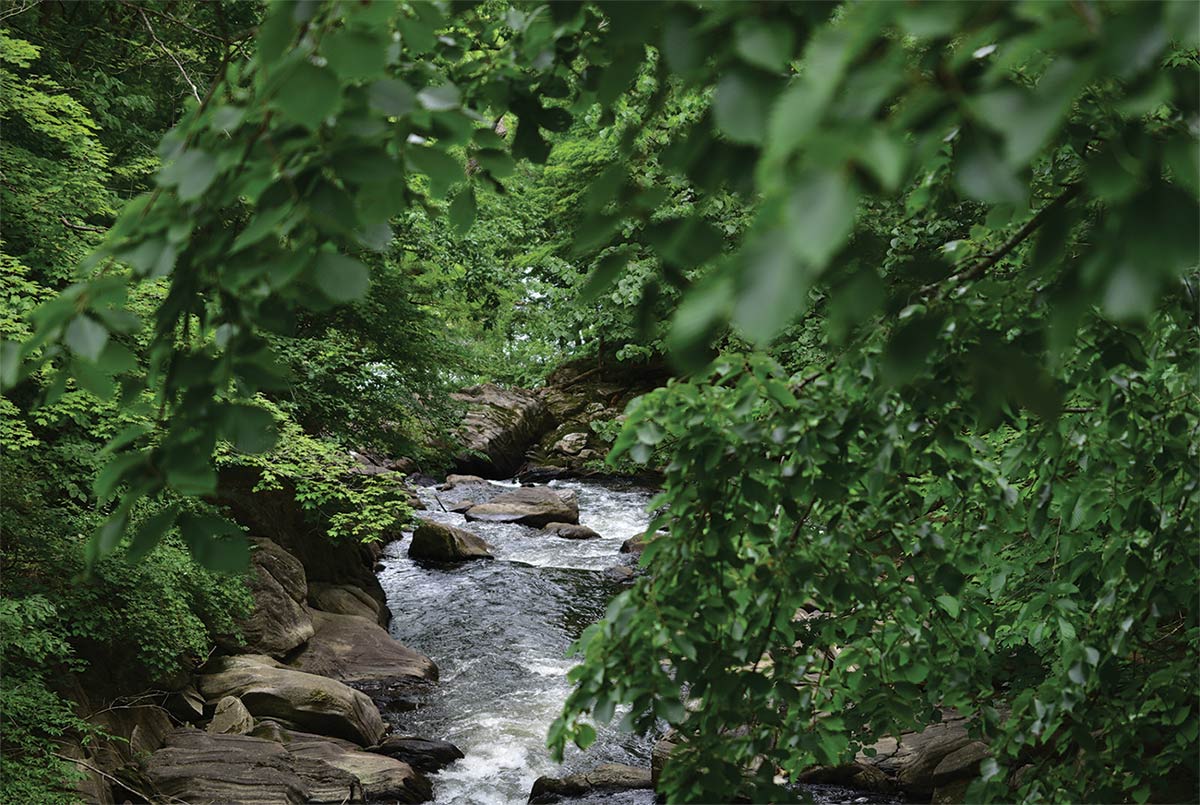
Photo by Fern Crossway